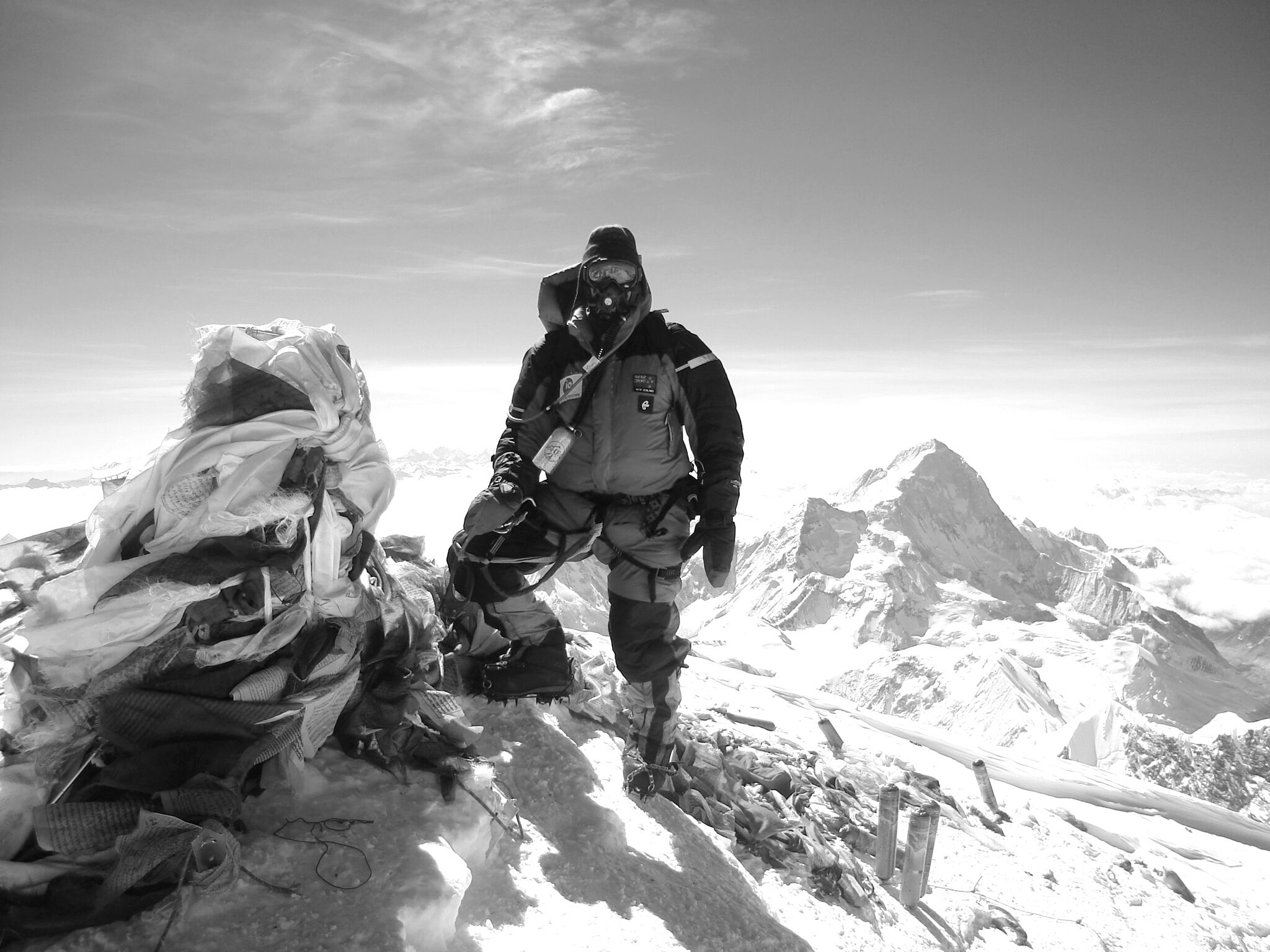By Jamie Joseph
I clicked the transmit button on the control column to tell the Coast Guard pilot, ‘This is it, we’re going in!’ The words never came out. Instead what emerged was a sound I had never heard before - a scream, a spine-chilling scream of death. I remember being shocked when I realised the noise was coming from me as the aircraft I was flying nose-dived into the sea.
This is the first paragraph of Mike Allsop’s memoir; High Altitude: Mountaineer, Airline Pilot, Modern-day Adventurer.
In 1995, while flying a small plane 150 nautical miles off the coast of Hawaii, Mike and his crew were forced to ditch their aircraft in a three metre swell under a black hole sky. Mike was 25 at the time, still early days in his flying career, and instead of staying at the back of the plane (where the chances of survival were much higher) he joined the Captain in the cockpit.
“There was just no way I could have ever lived with myself, sitting at the back while the captain ditched that plane,” says Mike.
They shook hands, wished each other good luck, and prepared for the final descent, quite possibly, the final descent of their life. A Mayday call was answered by the US Coastguard, and two F-15 fighter jets and a C-130 Hercules were sent to intercept.
An F15 flew underneath them, and then flew up in front of their plane, the F15 after burners went on, and their small plane flew straight through the wake. At this point, Mike and the captain nearly lost control.
Then the Hercules turned up and said, “You have to retract your undercarriage, otherwise you have minimal chances of survival.”
“It doesn’t retract,” replied Mike.
And what followed was a chilling moment of silence.
They hit the water, Mike’s seat snapped, and he was crushed into the front of the control panel, breaking some of his ribs. His head was knocked back, his jaw was locked open, and he started swallowing water.
Nose down, tail up, a calm and eerie thought crossed his mind that if he took a breath of water it would all be over…
As he swallowed, the aeroplane bobbed out of the water and there was about two inches of air left in the cockpit. He put his lips to the ceiling, looked over to the captain to see if he was still alive, and their eyes met, wide open.
The Colonel that rescued them that fateful night said that he knew of at least 300 aircraft that had gone down off that coast of Honolulu, with more than 1000 dead, and no survivors.
Wake up calls come in many forms; for some people a near death experience is a sign to hit the brakes, for others, like Mike, it awakened his zest for life, and he found himself reconsidering everything that he had ever deemed impossible.
Mountaineering became Mike’s passion, climbing led to him dodging bullets in Russia, and in Peru he narrowly missed a fatal avalanche. But ultimately his “Everest” really was the real thing.
In 2007, at age 37, Mike scaled the mighty Mount Everest.
“Right at the summit everything turned to custard,” says Mike. “My left leg collapsed, and then my right leg collapsed, I was really disorientated and I fell over into the snow. I had that same calm thought as I did when water was engulfing our plane in Hawaii: so this is what it’s like to disappear…”
Fortunately the Sherpa travelling with Mike quickly worked out he had run out of oxygen, changed the bottle, and in doing so saved Mike’s life.
“Looking back I didn’t feel like I had conquered Everest. Everest allowed me to stand on the summit, and I managed to escape with my toes and my ears.”
Not content with being an exceptional climber, Mike decided to take up running. Before long he was attempting to run the world’s highest marathon on the slopes of Mount Everest. Then an even bigger challenge—seven marathons, in seven continents, in seven days.
This marathon fundraising mission raised $75 000 for KidsCan New Zealand.
Says Mike, “My friend, Buddhist spiritual leader Lama Geshe told me that if every person gave a little more than they took in life, the world would be a much better place. And this is how I try to live my life.”
The list of adventures coupled with community give back goes on and on, and Mike stays balanced by being connected to both his wings and his roots.
“I don’t actually like running, and I wouldn’t consider myself a good runner,” adds Mike with a chuckle. “Running is my vehicle to adventure, but my real passion is flying for Air New Zealand. It’s a bit of an oxy-moron, but it keeps me grounded.”
Mike Allsop is an ordinary guy doing extraordinary things, and that’s how he likes it. He has a wonderful wife and three kids, and he just happens to overcome huge challenges. His expeditions often include his family, and when each of his children turned seven he took them to Nepal for some “dad time” and an adventure of a lifetime.
“When people see me as a regular person they can relate to me, and then they start drawing parallels in their own lives, and often people will comes up to me and tell me that they ran their first fun run, or they’re going to attempt to climb Mount Kilamanjaro. And that’s just gold for me, knowing I inspired someone to take that next step.”
You too can take that next step with Mike Allsop, when he steps up to the TEDxAuckland stage on Saturday 16 August, Aotea Centre. Tickets selling out fast.
By Jamie Joseph
